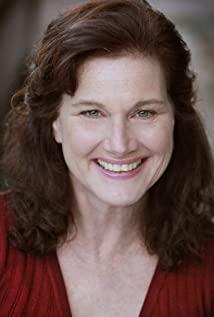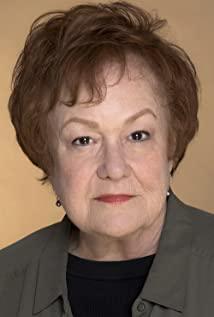Referring to various similar situations in the past, it is difficult to achieve a strong dramatic tension in such films based on real events. And when we cut this story apart like a parrot, we found that it can be divided into three parts: the unyielding mother's love, the inaction of law enforcement agencies, and the story of a serial killer. You'll sigh that Clint Eastwood is so great.
It is no exaggeration to say that Angelina Jolie's performance of motherhood in the film is as exciting as Harry Berry's performance in "Dance of Death Row". And the story of a serial killer, although only interspersed, is much better than the slightly rambling of David Fincher's Zodiac. In the end, the Los Angeles Police Department, where the conflict was most intense, was not used as a clip. Although there was no large-scale depiction, it was not inferior to the multi-angle conflict in "L.A. Confidential", and it was real and powerful.
In the opening 20 minutes, the warm happiness of the mother and son is filled with them. All of this catches people who know that misfortune will happen. When misfortune comes, the filth that comes from lies is unavoidable.
The train station, a strange boy, instantly became the son of a single mother Christine. Reporters watched from a short distance away, and the crowd stirred and uneasy. The police officer Jones who stood in front of him was eloquent, the music became more and more pathetic, and the woman had no way. Every flash of the spotlight is like a hammer hitting the heart. There was a loud bang, and I couldn't dodge. He is not her son.
That is false, there is only one truth.
If from now on, if you want to involve a lot of clues and cause follow-up conflicts based on the disappearance of a boy Walter, that is a knowledge that is difficult for movies to master. That is: "change"! What it needs to show is that it is not as simple as changing the identity of a boy, but the chain reaction after the replacement is the most terrifying. Mother Christine needs to try to accept the child in a different way (of course this attempt is futile). We need to look at the story with a different mindset (thought it was just a mother's movie, but it's not). The movie itself also needs to change its angle and tell everything that follows. Pursuing the truth instead of the interpretation of maternal love has become the theme of the second half. Fortunately, the rhythm of this story is not fast, and it is a little bit detailed for people to browse. And the soundtrack of the piano music always sounds "out of time", so that all conflicts are carefully hidden in the emotions, and the audience's emotions are involved in a reluctant way.
In the first half of the film, Christine's many efforts are mixed with the restlessness and stubbornness of a small person. When talking to Jones, talking to the doctor. This woman is carefully maintaining the bottom line of a conversation environment. What's great is that the villain is always a shortcut like a "crash course in acting". Originally seemingly bland lines, the true lies were spoken out by Geoffrey Donovan, who played Police Officer Jones, with a mean face.
The most common trick in a good play is dislocation. The first way to express dislocation is to ask someone to say words that are not in line with their identity, but are logically smooth. The specific demonstration of this method is to let a small supporting character wake up the person in the play with an unintentional speech. But compared to this common dislocation, the dislocation of "Suspicious Cloud" is obviously higher than that. That is, in all subsequent conversations, the so-called "villain" characters are using logic that does not conform to their identity, and they can't be called. Words of our acknowledgment. That's what Officer Jones talks about in the film about "mother duty." It is said word by word to seek the truth, when trying to find Christine, the mother of his son, it brings more than just appearing ridiculous.
More feelings come from the horror of the word "true".
The authenticity of the story is the biggest capital of "Suspicious Clouds". Would you like to see a story about Angelina Jolie's journey to becoming an actress? Or do you want to see the story of a lost child? Actually, not quite. Director Eastwood just wanted to strive for realism. Realism in film is not just based on technology. True, not just those old-fashioned streetcars that zip through the city. Real, not only the black and white at the beginning turns into a color-like picture effect (don't forget that the long cross street mirror at the end is back to black and white, which means that history will be dusted again). The truth is not just the quarrels that the characters do not shy away from.
This truth comes from reality.
The phenomenon of misrepresentation, confusion of black and white, and inversion of right and wrong. It's not the 1920s that only existed in the film. People love and are shocked by this film, largely because it recreates the injustice they experienced, and that's it.
However, in the past, films based on real events tended to lose dramatic tension and become verbose if they simply tried to be realistic. This is exemplified by Zodiac, a film that, in order to show the lives of a generation tormented by serial killers, has drowsiness and a near-detailed plot that go hand in hand. Then, the smoothness and climax of the film "Suspicious Clouds". It can be said that Strasinski's script has contributed. It's too hard, too hard, to figure out the clues from the countless files, and then give them the rhythm that the movie deserves.
Therefore, only by telling it in a special way can this film become fascinating. The film uses a narrative style that resembles an old-fashioned movie. In a eloquent way, the conflict is included in it. In other words, the film is not the "old-fashioned" way of "Zodiac". But it's really "old". It can be said that one of the functions of old-fashioned movies is smooth narrative. In order to ensure this, the audience will not jump out of this viewing process. Technical ostentation is all but absent in this film. The technical assistance of the film is only a few scenes: the opening section of the train station, the rotating camera constantly detours between the reporter and the parties. The fake "Walter" is lying in the room, with the darkroom effect of Christine's one-sided conversation. Another, the little Canadian boy who was the killer's brother, saw the sound effect zooming in on the killing scene when he saw the taping ruler. These passages are the only scenes where technology aids the narrative. The camera throughout the film is so obedient that it feels a little snoopy. It quietly tells a story there. There is no technology that is too out of place, unlike a movie, the story can be smoother.
This is the real old, and the difference between "doing old".
Finally, look at Angelina Jolie, who plays her mother. I like her performance in this story, rather than the character Christine. The "hope" she said is the most distinctive symbol of this character. The story itself is already dark. But her unremitting efforts have become the only remaining light. As a mother, she portrays a character who is resolute, tough and moving. The shouts of "I want you to go to hell" when facing the murder of Northcote! Impressive. Her change is not only the bright powder and angular appearance of her appearance. Moreover, the pathos of its interpretation is not as deliberate as most films expressing maternal love. When this mother wants to cry, you will feel naturally infected. All of this has given Angelina Jolie a lot in the past year. In 2008, her 2008 is obviously not just a familiar pursuit with double guns in "Wanted Order". When a star is multi-faceted and has no sense of "familiarity", the actor's name and the glory of the golden statue are getting closer and closer.
However, even though there is hope in the film, the reality is extremely cold. What we don't want to face is the true off-screen ending where Walter is no longer alive and his mother is nowhere to be seen. This makes finding the truth always a price to pay. no matter what age. Whether in reality or in movies.
I didn't expect the old cowboy to bring such a dark story, and he was so depressed from beginning to end. The story of the pursuit of truth is the most exhausting and the most loved. Even if the truth being pursued has only a slightly brighter ending.
And as long as they want to pursue it, no one is afraid that the truth will be scarred and bloody.
View more about Changeling reviews










